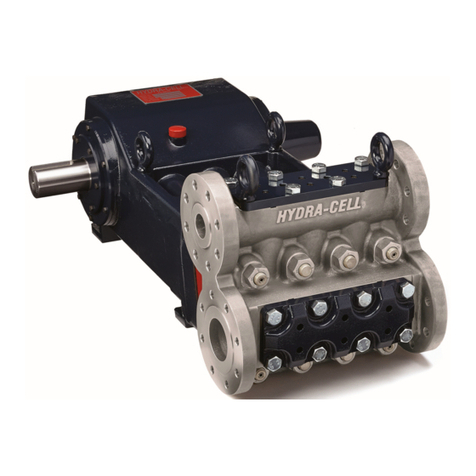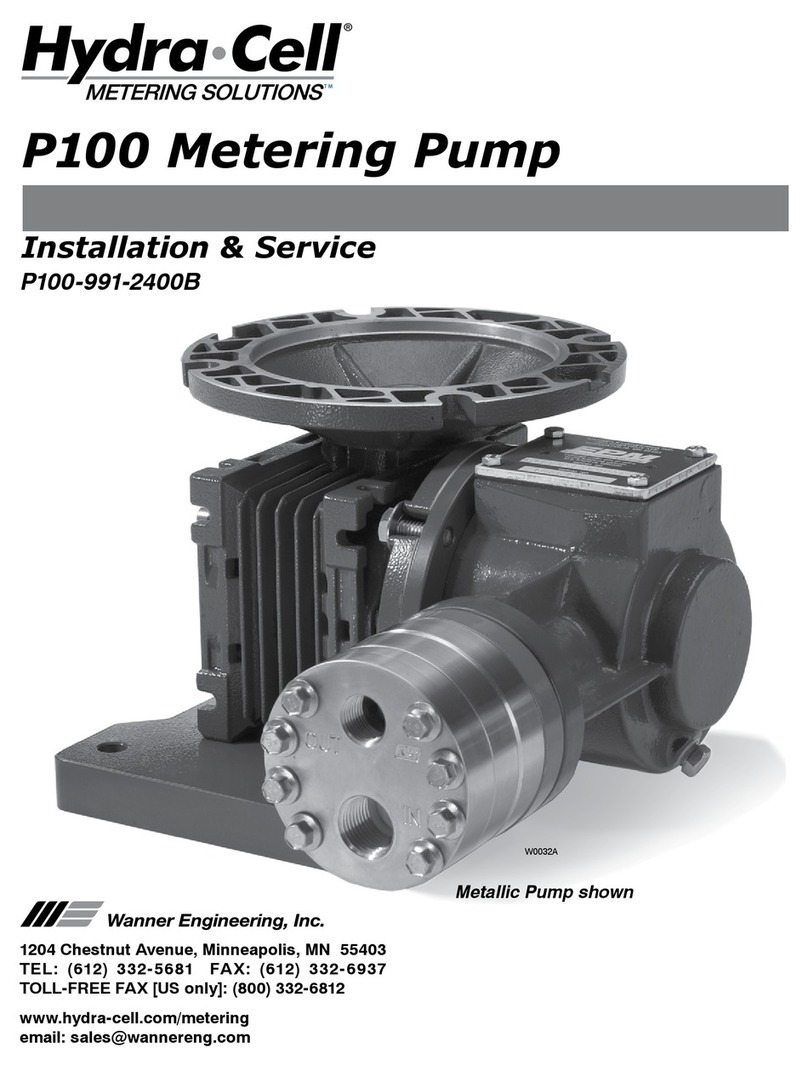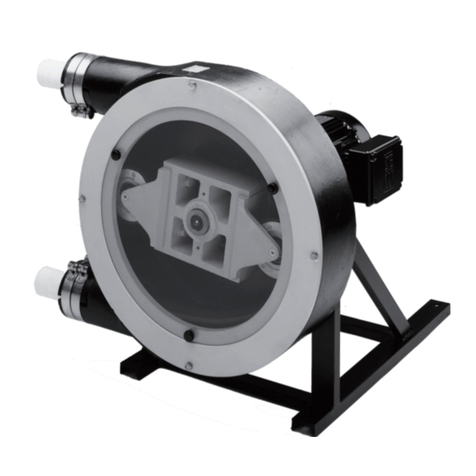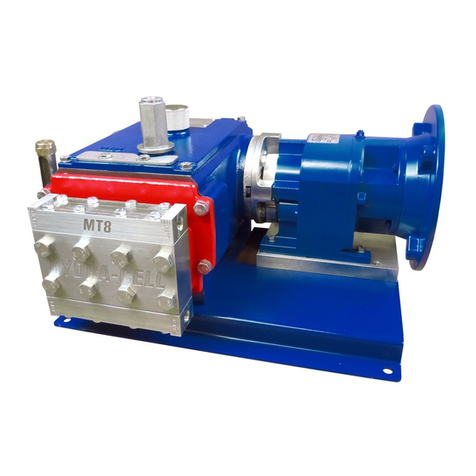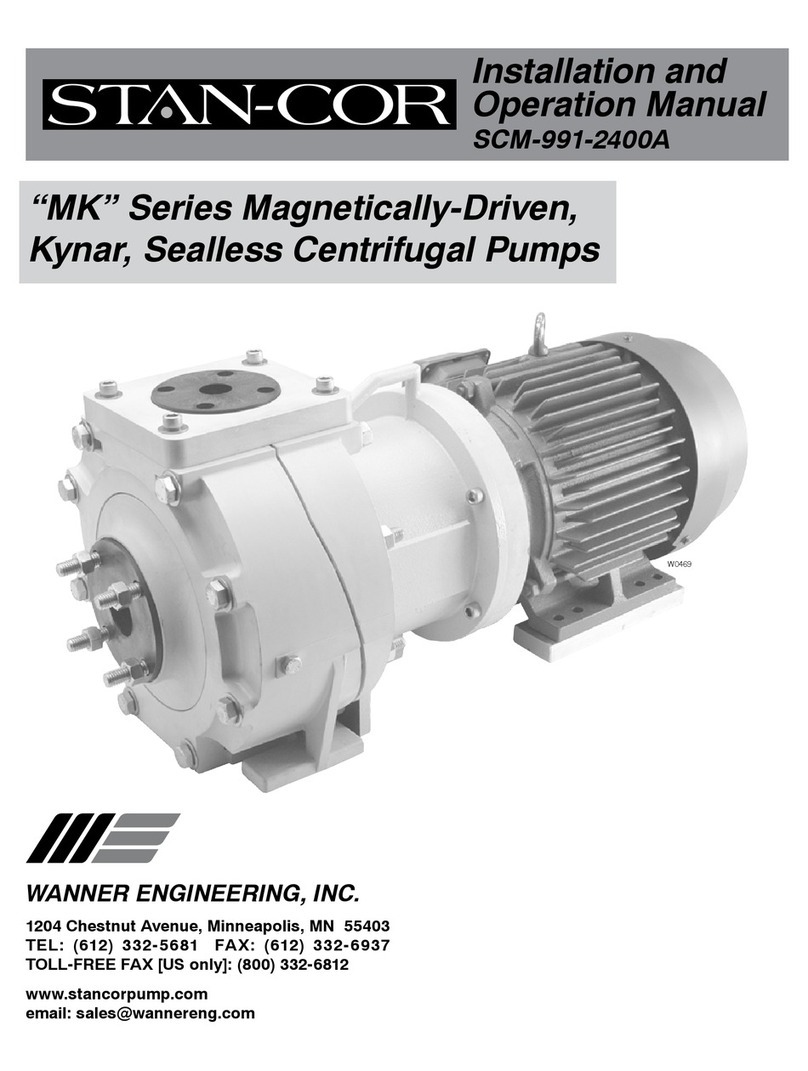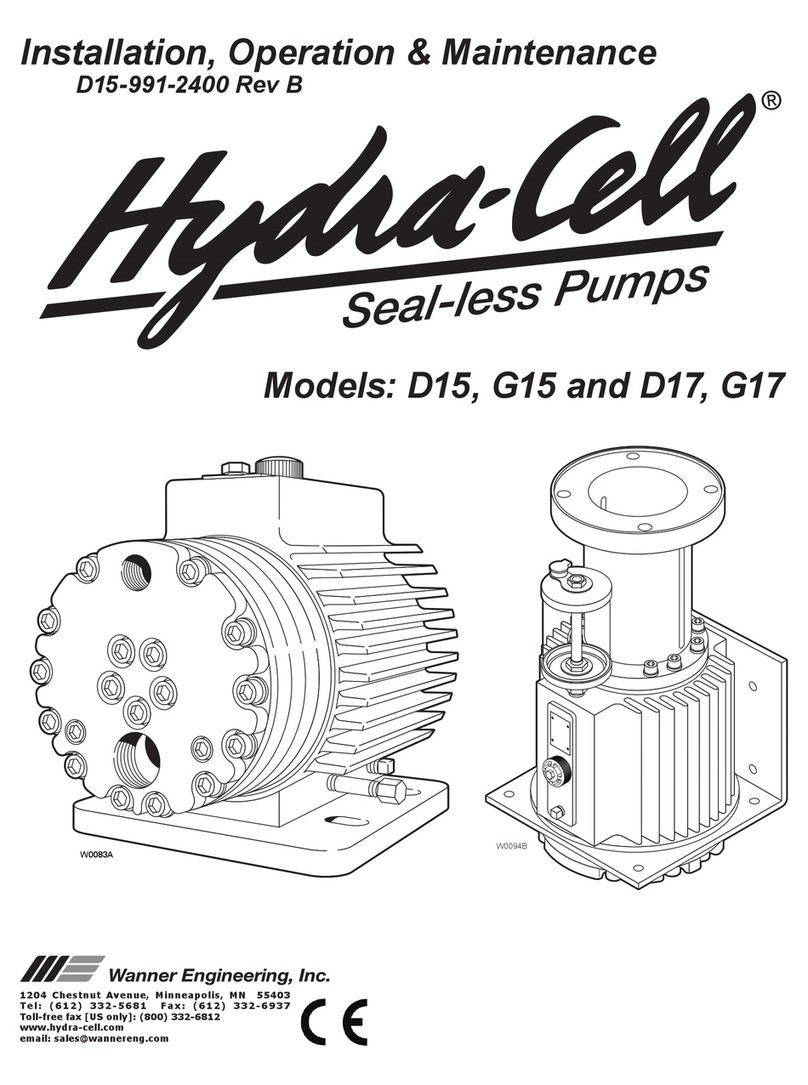
7H25-991-2406A
Before Initial Start-Up
Before you start the pump, be sure that:
• All shut-off valves are open, and the pump has an adequate
supply of fluid.
• All connections are tight.
• The oil level is approximately 1 in. (2.5 cm) from the top of
the fill port — so that the floor of the upper reservoir within
the pump housing is flooded and the chamber itself is about
1/4 full, allowing for oil expansion as the pump runs and heats
up.
• The relief valve on the outlet of the pump is adjusted so the
pump starts under minimum pressure.
• All pulleys and belts are properly aligned, and belts are
tensioned according to specification.
• ll pulleys and belts have adequate safety guards.
Initial Start-Up Procedure
1. Turn on power to the pump motor.
2. Check the inlet pressure or vacuum. Inlet vacuum must not
exceed 7 in. Hg at 70° F (180 mm Hg at 21° C). Inlet pressure
must not exceed 50 psi (3.5 bar).
3. If you hear any erratic noise or if the flow is unsteady, refer
to the Troubleshooting Section.
4. If the system has an air lock and the pump fails to prime:
a. Turn off the power.
b. Remove the drain plug (4) on the bottom center of the
manifold.
Note: Fluid may come out of this port when the plug
is removed. Provide an adequate catch basin for fluid
spillage, if required. Fluid will come out of this port
when the pump is started, so we recommend that you
attach adequate plumbing from this port so fluid will
not be sprayed or lost. Use high-pressure-rated hose
and fittings from this port. Take all safety precautions
to assure safe handling of the fluid being pumped.
c. Jog the system on and off until the fluid coming from this
port is air-free.
d. Turn off the power.
e. Remove the plumbing that was temporarily installed, and
reinstall the drain plug (4).
5. Adjust the discharge pressure regulator to the desired
operating and bypass pressures.
6. After the pressure regulator is adjusted, set the “pop-off”
safety relief valve at 100 psi (6.9 bar) higher than the
desired operating pressure. To verify this setting, adjust the
discharge pressure regulator upward until the relief valve
opens. Follow the recommendations in the above Note
(Step 4b) for handling the fluid that will come from the relief
valve.
7. Reset the discharge pressure regulator to the desired system
pressure.
8. Provide a return line from the relief valve to the supply tank,
similar to the bypass line from the pressure regulator.
H/G-25-SD Installation
The smallest permissible discharge hose size is:
1 to 10 gpm............................................... 11/16 (0.687) in. I.D.
11 to 20 gpm................................................................ 1 in. I.D.
1 to 38 liters/min...................................................... 17 mm I.D.
39 to 76 liters/min....................................................25 mm I.D.
Use flexible hose between the pump and hard piping, to absorb
vibration, expansion, or contraction.
Never install a shutoff valve in the discharge line between the
pump and the regulator, or in the bypass line.
Select pipe or hose with a working pressure rating of at least
1.5 times the maximum system pressure. Example: Select a
300-psi W.P.-rated hose for systems to be operated at 200-
psi-gauge pressure.
Support the pump and piping independently. These supports
are essential, because the manifold and inlet/outlet
adapters are plastic and more susceptible to damage.
Pressure Regulation
IInstall a pressure regulator or unloader in the discharge
line. Bypass pressure must not exceed the pressure limit of
the pump.
Size the regulator so that, when fully open, it will be large enough
to relieve the full capacity of the pump without overpressurizing
the system.
Locate the valve as close to the pump as possible and ahead
of any other valves.
Adjust the pressure regulating valve to no more than 10% over
the maximum working pressure of the system. Do not exceed
the manufacturer’s pressure rating for the pump or regulator.
Route the bypass line to the supply tank, or to the suction line
as far as possible from the pump (to reduce the chance of
turbulence).
If the pump will be operating for a long time with the discharge
closed and fluid bypassing, install a thermal protector set to
trip at 120° F (49° C) in the bypass line — to prevent severe
temperature buildup in the bypassed fluid.
Caution: Never install shutoff valves in the bypass line or
between the pump and pressure regulator or relief valve.
Provide for permanent or temporary installation of a pressure
gauge to monitor the discharge pressure at the pump.
For additional system protection, install a “pop-off” safety relief
valve in the discharge line, downstream from the pressure
regulator.
Always tighten all piping connections, gauges, and regulators
before installing the piping cluster into the pump manifold.


